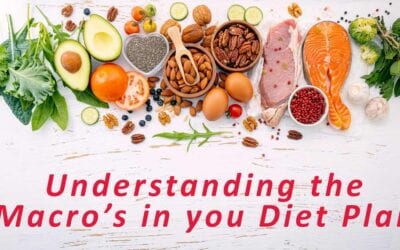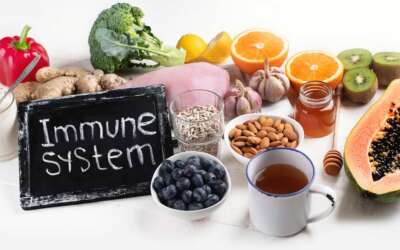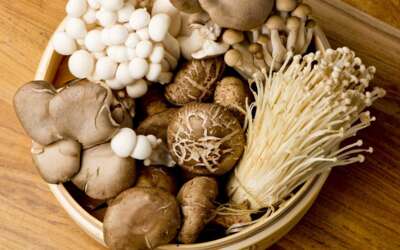Physical Vs Mental Fitness
There is but one way to live life to its fullest- being fit. Understanding the benefits of all-round fitness and knowing how active you should make it easier to improve the overall quality of your life. To help you live better, here’s how you can benefit from mental and physical exercise regardless of your age, sex or physical ability.
When talking about fitness, both mental and physical fitness come into play. More often than not, physical fitness gets plenty of attention, and for a good reason. A healthy body can counter conditions such as heart disease and diabetes, and help you maintain confidence as you age.
However, mental fitness is just as important as physical fitness, and should not be neglected in your self-betterment plans.
Mental fitness means having a brain and emotional health in tip-top shape. It may not necessarily mean training to ace an IQ test, but a series of exercise that helps slow down, decompress and boost a flagging memory.


Aerobics (cardio)
Aerobics involves maintaining an increased heart rate for an extended period of time. Types of cardio exercises include running, swimming, biking, rowing, dancing, and jumping rope.

Strength
Also called Resistance Training. It’s a physical activity with the purpose of increasing muscle strength and mass. Examples include weightlifting, dumbbell and bodyweight exercises.

Balance
This is where you activate your abdominal muscles for stability and control of your body. Balance exercises can include yoga, tai chi and stability ball exercises.

Flexibility
Bragging about how much you can bench is no fun if you have trouble tying your shoes. Flexibility saves you from tight hips, hamstrings, hip flexors and makes you as strong as you can be.

Why you need to be fit and importance of physical fitness
Weight control leads you towards fitness
Along with diet, exercise plays an essential role in managing your weight and preventing obesity. To maintain your weight, the calories you are taking must equal the energy you burn. To lose weight, you must utilize more calories than you eat and drink.
Manage your sugar and insulin levels
Exercise can reduce your blood sugar level and help your insulin work effectively. This can lower your risk for metabolic syndrome and type 2 diabetes. And if you already have one of those diseases, exercise can help you to maintain it.
Feel Happier through fitness
Exercise has been shown to improve your mood and reduce feelings of depression, anxiety, and stress. It produces variations in the parts of the brain that control stress and anxiety. It can also boost brain sensitivity for the hormones serotonin and norepinephrine, which relieve feelings of depression.
Better Mental Health and fitness
Regular exercise can have an extremely positive influence on depression, anxiety, ADHD, and more. It also relieves stress, increases memory, helps you sleep better, and boosts your overall mood. You don’t have to be a fitness fanatic to reap the benefits – browse through our site and discover how to reap these benefits.
How to Achieve Mental Fitness
Be positive with yourself and improve your fitness
Affirmation, or positively talking to yourself, involves strengthening neural pathways to bring your self-confidence, well-being, and satisfaction to a higher level. To start, make a list of your good qualities. Remind yourself that you don’t have to be perfect. Set goals for what you want to make better and start small to avoid becoming confused.
Stop Multitasking
Many think that multitasking enables you to get more things done at once, but it creates more problems than it solves. Focusing on one task at a time will improve your concentration and help you to be more productive.
Try Something Different
New practices can also set you on the way to mental fitness. You can fit new approaches into your daily life by trying new foods, new ways to accomplish routine tasks, traveling to new places or trying a new route to the grocery store.
Read More
Reading is great for your brain. Your brain processes every word you read, including this one. Beyond the mechanics, reading helps you visualize the subject matter on the pages before you, and imagine what voices sound like in the written dialogue.
This can also be a great relaxation technique
Top Fitness Tips for Mental and Physical Exercise.
General physical fitness and targeted exercises to improve stability can prevent falls. But so can staying mentally ready to maintain brain health. A sharp mind helps you to think — and stay — on your feet. Join us and learn to strike a balance.
Understanding the Macros in your diet
Trying to find a healthy diet plan that does wonders for you is near to impossible. With so many diets burgeoning in the health & fitness arena, comparing diet plans is no walk in the park.
This indepth article explains in layman’s language the main elements these diets discuss and how it is compared between them.
Best Vitamins to Boost Immune System Naturally
We all need to be conscious of maintain and improving our immune system. There are many ways to boost it naturally through healthy foods.
With a little bit of planning before going shopping, we can make a huge difference to our own immune system.
Mushrooms boosting your immune system
A review of 5 mushrooms that act as turbo booster for your immune system. The benefits of having mushrooms include improving your immune system. increasing your energy levels. Yes they considered as magic mushrooms.
150 Exercises You Can Do
As a bonus, we are giving a free fitness exercise ebook to start your healthy lifestyle
Understanding the Macros in your diet
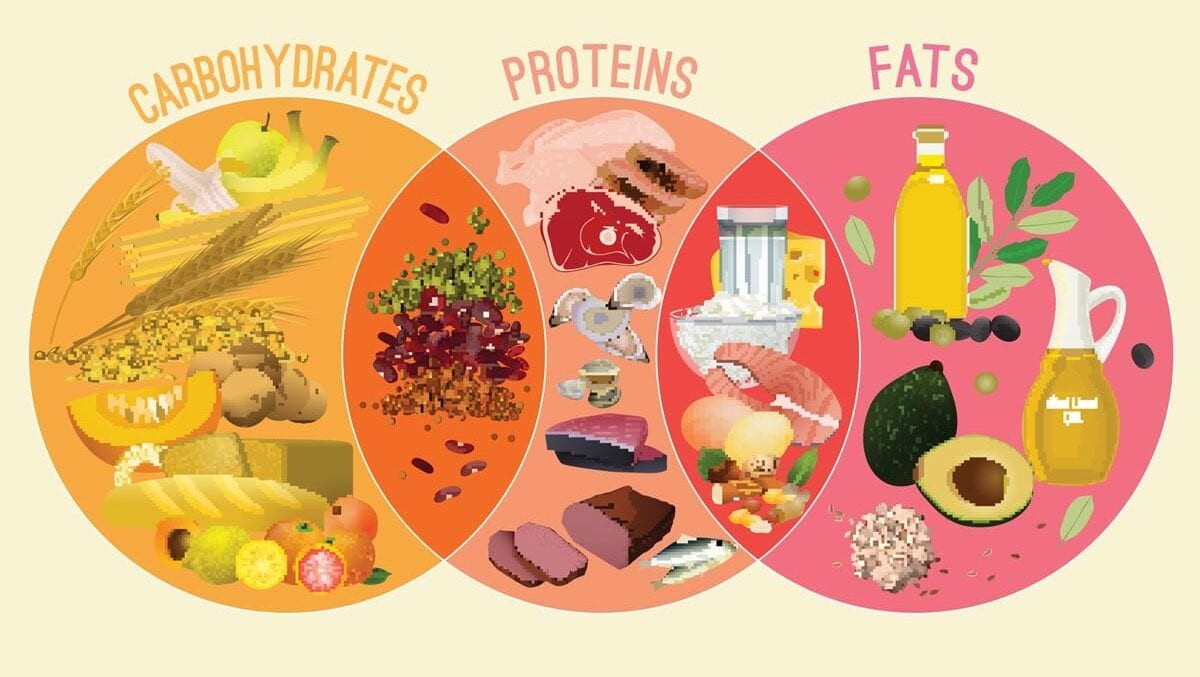
What makes streamlining the right diet worse is the confusion created by the enormous amount of conflicting information on what to eat and what not to eat. And also, the quantity of every meal and every bite you take while comparing diet plans!
Eating healthy to maintain, lose, or gain weight should not be a Herculean task. Therefore, we are diving into, and breaking down, the top seven asked-about diets that have taken the world by storm.
Table of Contents
Calories & Calorie Count
All about Fats in our Diet
What is about Protein?
Kilogram Rules
Carbohydrates, Carbs so what?
What is the fuss about Gluten, Lactose, and Dairy
Gluten, what does it actually mean?
Lactose, Lactose Intolence-what is it?
Dairy- can everyone tolerate it?
Lactose Intolerance vs Dairy Allergy
Learn about the famous Keto Diet
Paleo diet explained
Weight 30 Diet Described
Akins diet revealed
Vegan Diet Exposed
Mediterranean Diet – All about
The Dash Diet Explained
Diet Summary Comparison
The Final Say
Fun Fact: Human brain uses a whopping 20% of your body’s total energy.
Clear Calorie Confusion

To know how many calories your body requires is not straight forward. There are a plethora of factors like age, gender, and activity level. In this article, we plan to provide some guidance about the calory intake required for you. Before we go there, we have tried to uncomplicate the key concepts around calories and diets. Not only is it important to know your calory intake, but it is also necessary to know the count of calories you consume and burn. We have covered the pros and cons of each article.
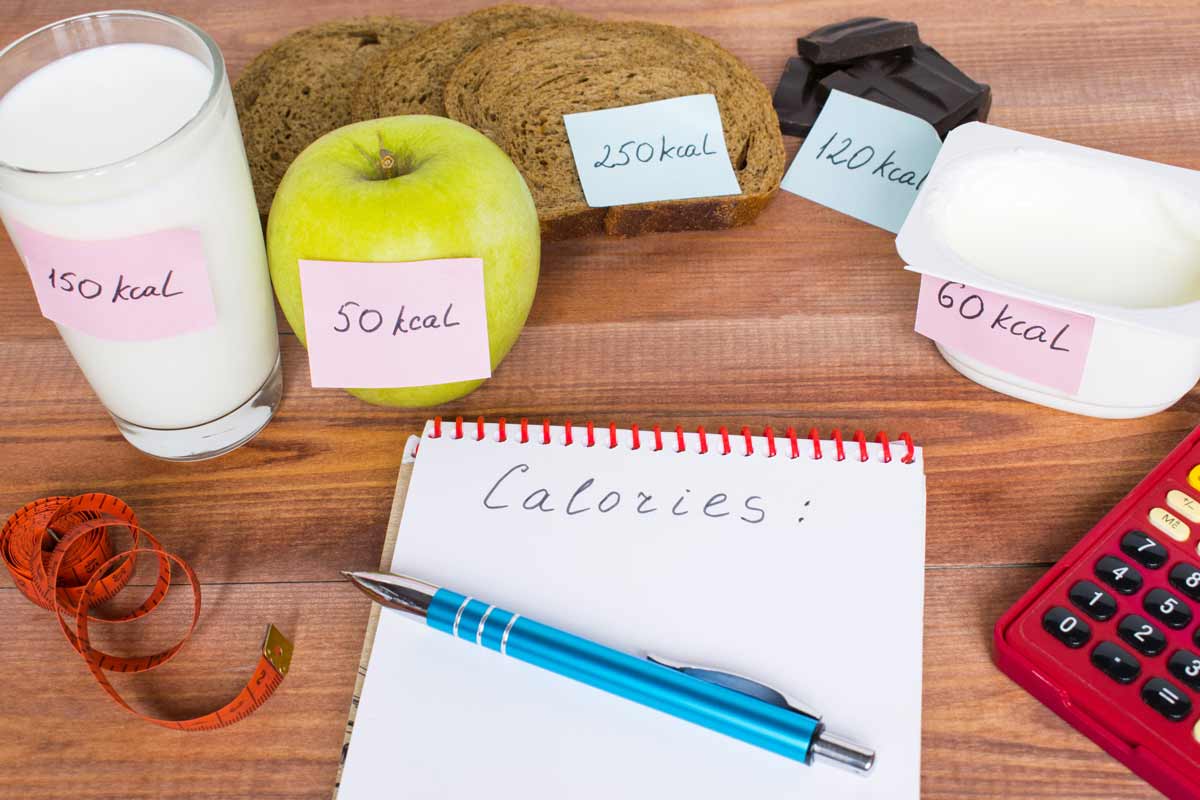
Good and Bad Calories
Even though the definition specified above might have made it sound simple, not all calories are created equal. Your body needs calories from a wide variety of foods. Not all foods are good for your body, and you need to know which ones to go for and which ones to avoid.
You might have read the phrase “balanced diet” a lot in your science textbooks growing up. It means that the calories entering your body come from the right sources, and are spread over the right kinds of foods.
The main difference between good and bad calories is the kind of nutrition they provide to your body. Good calories will be healthy calories, while bad calories will be empty calories that provide no nutritional value.
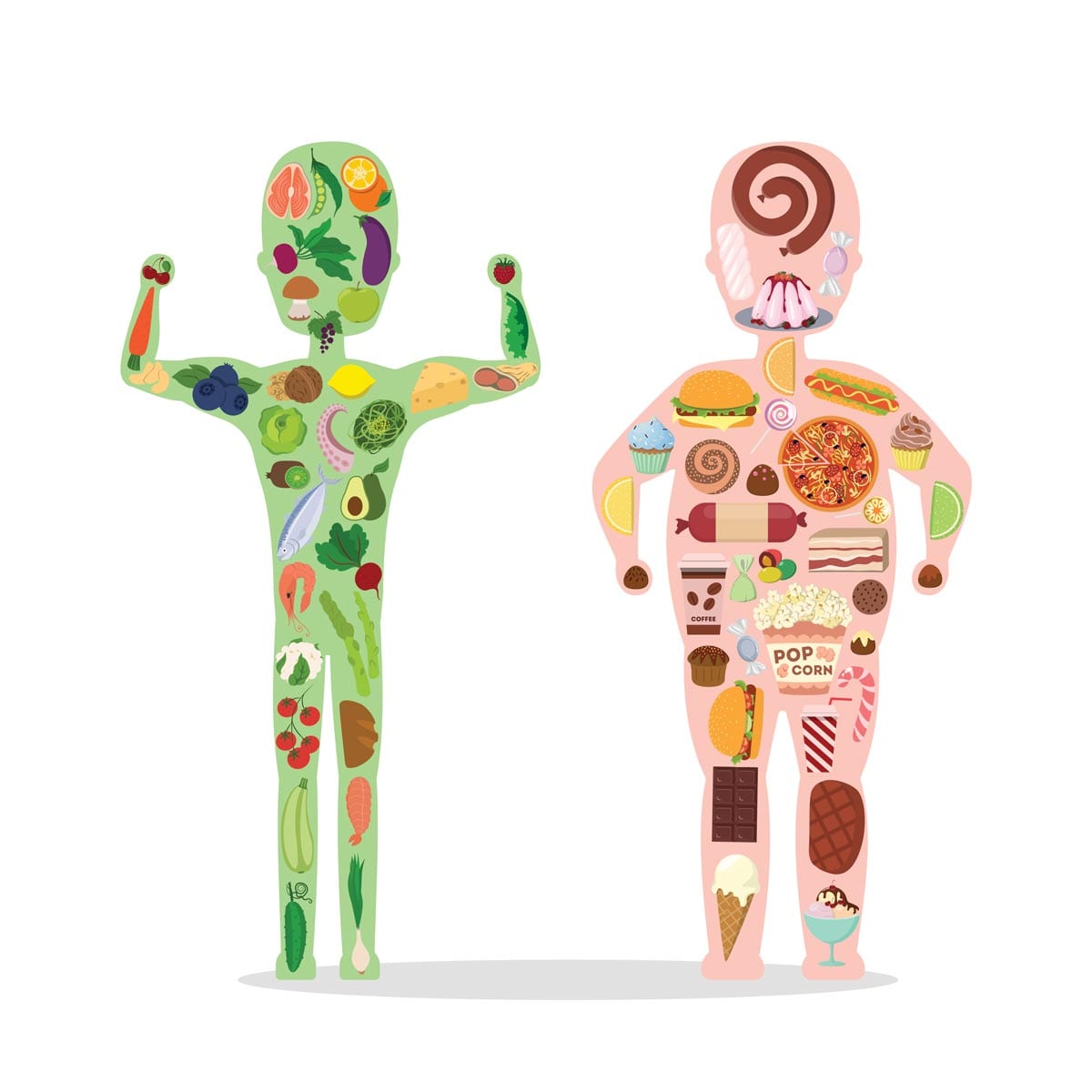
Calorie Control: Too Much or Too Little?
There is no specific number of calories that works as the “right” amount for everyone. The number of calories you need to consume differs based on your gender, age, height, weight, and whether you’re underweight or overweight. It also depends on the amount of exercise you get in a day.
According to the U.S. Department of Health, adult males typically need 2000-2500 calories per day to maintain weight, while adult females require 1600-2400 calories.
The lower number in this range is for someone with a sedentary lifestyle, while the higher range is for someone who gets active exercise 5 times a week.
Calorie requirements typically peak in your 20s. As you get older, your body needs a lower number of calories to function independently without any exercise (which does NOT mean that you should not exercise!)
Calorie Calculator
Start with 2500 calories per day for men and 2000 for women. Add 250 calories per day if you get moderate exercise and 500 if you are into intensive exercise. For every ten years of age above 25 years, subtract 100 calories from your daily intake.
For example, if you’re a 45-year-old male who gets moderate exercise and is looking to gain weight, you would need 2500 + 250 – (2*100) = 2550 calories per day.
The U.S. Department of Health puts out a chart of calories every year. If you’re looking for a more exact number on how many calories you need, you can also use an online calorie calculator.
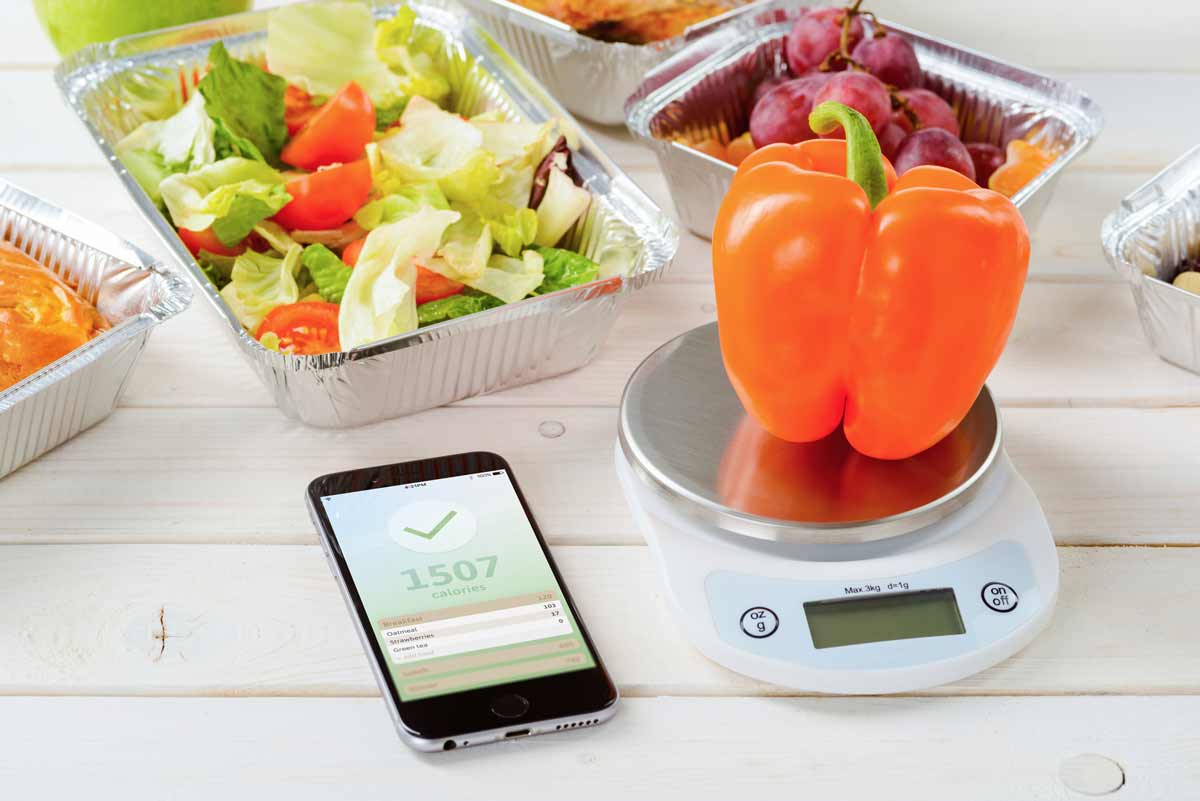
Read the Packaging
According to scientists, the official way to calculate the number of calories in food is to heat it in a sealed container until it is completely burned off and check the amount of energy required for it to do so.
Thankfully, you will not have to resort to such intense measures at home to measure what you’re eating. Modern-day calorie counting is based on the Atwater System, also known for simplicity as the 4-9-4 system. According to this, proteins and carbs have 4 calories per gram, while fat has 9 calories per gram. Alcohol is calculated at 7 calories per gram.
Another useful fact is that most foods nowadays come with packaging with exact nutritional values on it. If you make it a habit to always check the number of calories on everything before putting it into your cart at the supermarket, it will be much easier to switch to a healthier diet.
Like we discussed earlier, your daily calories need to come from more than one kind of food. And even within these foods, some are good for your body, and some are not. To start with, let’s take a look at the 3 main parts of the 4-9-4 system.
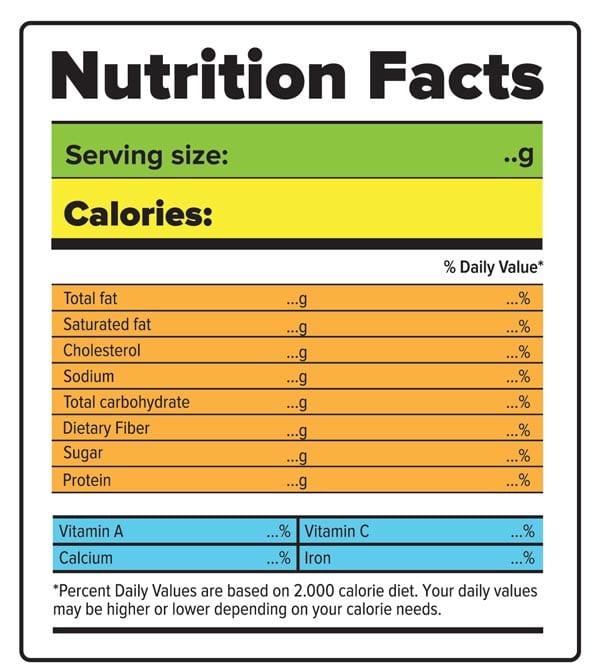
Fats in diets
If you are active on social media, you probably have heard the word fats being used in a negative connotation all the time.
Why would you put something in your body that would make you conventionally unattractive?
Your body needs fats.
They are essential macronutrients that are required in your body to help other nutrients do their job. They’re also the main line of protection for your nerves and bones.
Good and Bad Fats
Fats come in a lot of types – saturated, unsaturated, and trans, to name a few. Out of these, only unsaturated fats are the good ones.

Polyunsaturated fats are a subset of unsaturated fats that actually improve your cardiovascular health. Omega-3 and Omega-6 fats are examples of these, and they are shown to reduce cholesterol and blood pressure. These fats also help prevent heart disease and strokes.
Examples of good fatty foods include avocados, nuts, cheese, dark chocolate, and fatty fish. But even though these are excellent sources of good fat for your body, you need to eat them in the right amounts for them to actually be healthy for your body.

Portion Control is Key
Your daily intake of food must have a healthy portion of fatty foods. According to studies, about 20 to 35% of your daily calorie intake should be in the form of healthy fats.
This means that if you’re consuming 2000 calories per day, 400 to 700 calories of that should come from fat. As fats give you 9 calories per gram, this comes up to 44 to 78 grams of fat per day.
It will not always be possible always to eat good fats all the time. Experts suggest that you can have up to 10% of your daily fat needs in the form of saturated fats. So for a 2000 calorie diet, you should not eat more than 22 grams of fat per day.
What is about Protein?
Protein, a compound made of amino acids, is one of the essential macronutrients in your diet. The reason why you see so many fit people always talking about protein is that it is essential in building muscle.
When you exercise, your body breaks down a little every time. This is more pronounced if you’re lifting weights. Tiny cracks form in your muscles, and this is where protein comes into the picture.
Your body fills these cracks by using protein to create new muscle. That is how your muscles get bigger and more toned. Even if you’re not regularly exercising, the exhaustion of daily life ensures that you need protein in your diet to maintain a healthy lifestyle.

Protein, a compound made of amino acids, is one of the essential macronutrients in your diet. The reason why you see so many fit people always talking about protein is that it is essential in building muscle.
When you exercise, your body breaks down a little every time. This is more pronounced if you’re lifting weights. Tiny cracks form in your muscles, and this is where protein comes into the picture.
Your body fills these cracks by using protein to create new muscle. That is how your muscles get bigger and more toned. Even if you’re not regularly exercising, the exhaustion of daily life ensures that you need protein in your diet to maintain a healthy lifestyle.
Good and Bad Protein
But protein, like every other macro, comes in different types. Complete proteins are the ones that contain all the amino acids that your body can’t produce on its own.
These proteins are found mainly in animal sources like meat, eggs, and dairy. For vegetarian or vegan options, they are found in beans (kidney beans, soybeans, black beans, or lentils), whole grains (whole wheat, brown rice), and nuts (walnuts, peanuts).
But even though protein is good for your body, “the more, the better” is not a formula you can apply here. Yes, there is something called bad protein, and that is when you consume too much protein.
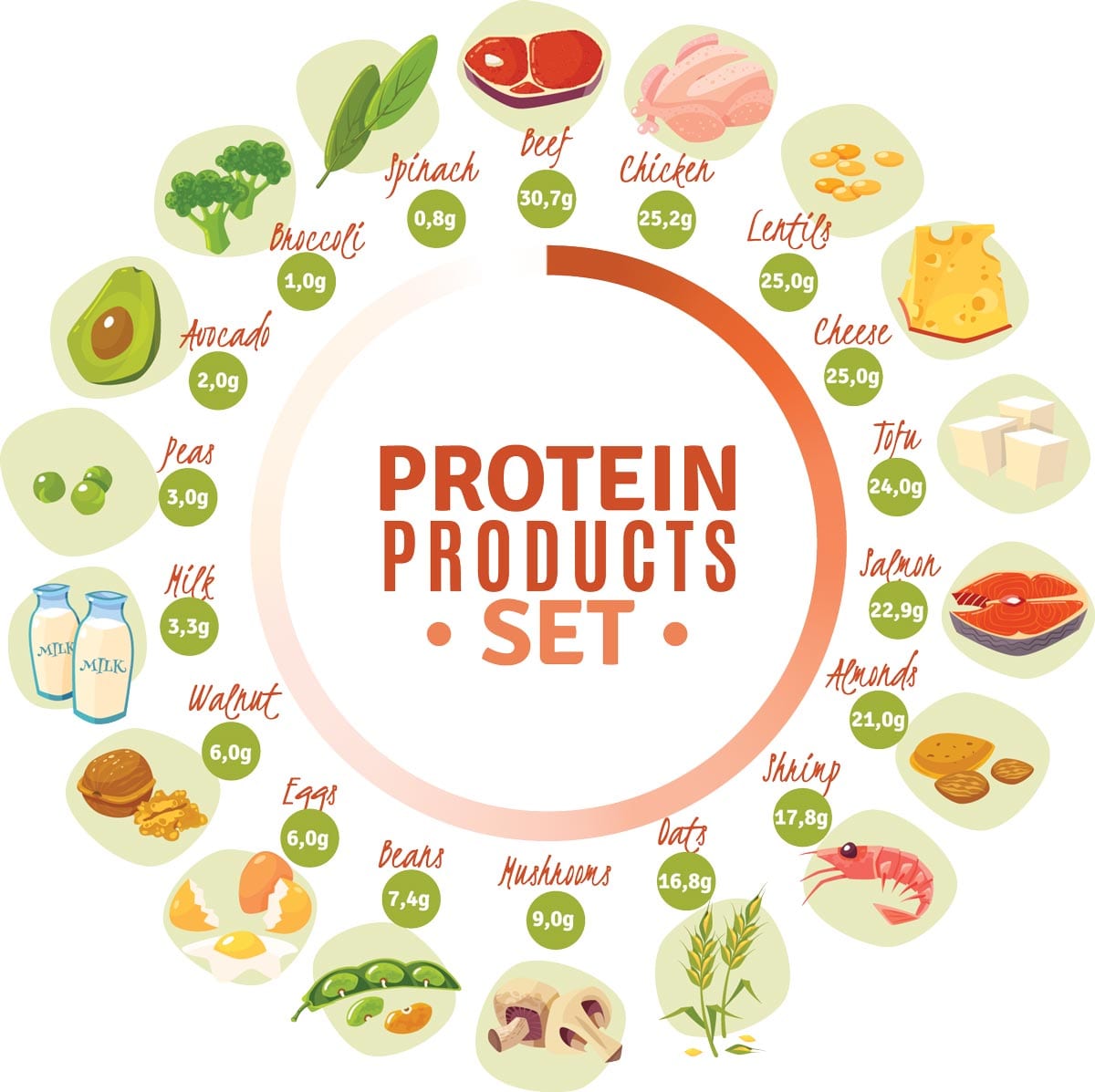
The Rule of Kilograms
A study has shown that the amount of protein you consume, and more importantly, the percentage of your daily calorie intake it comprises can significantly determine your weight and overall health.
The amount of protein you need to consume per day depends mainly on your calorie intake. We will talk about two ways to measure your daily protein intake.
Firstly, a general rule is to get 15-20% of your daily calorie intake from protein. That means, for a 2000 calorie day, 300-400 of your calories should come from protein. At 4 calories per gram, this gives you 75 to 100 grams of protein per day.
But a lot of it also depends on how much exercise you’re getting. Here is a simple rule for calculating your protein intake based on your daily activity.
No exercise: Bodyweight in kg * 0.8
Light exercise 4-5 times a week: Bodyweight in kg * 1.5
Intense exercise 5 or more times a week: Bodyweight in kg * 2
Too much protein in your diet (2.5 times your body weight or more with not enough exercise) can actually harm you. Studies have shown that an excess of protein in your body can cause damage to your bones, kidney, liver, and heart.
Carbohydrates, Carbs so what?
Carbs can be split into three different categories:
- Sugar,
- Starch, and
- Fiber.
Sugar and starches can be broken down and used by the body, while fiber is strictly a digestive aid for the body’s bacteria.
But even carbs get a bad name in trendy diets. Are some carbs actually bad for you?

Good and Bad Carbohydrates
Carbs can be broadly classified under two different types: Simple and Complex.
Complex carbs are long chains of carbohydrates that take some time to break down in your body, thus giving you energy over a longer time. These are the healthy kinds of carbs. Examples of complex carbs include whole grains (whole wheat, brown rice, and corn), beans (chickpeas, kidney beans, lentils), and, most importantly, fruits and vegetables. Even though fruits have natural sugar in them, they’re still a lot healthier than the sugars you get from processed foods and snacks.
Coming to the bad kinds of carbs, have you ever had a sugar high? Sugar is primarily glucose, which is a simple carb. These break down quickly, give you a surge of energy, and then comes the crash. When diet plans tell you to cut down on carbs, these are the carbs they are talking about.
Simple carbs break down easily in your system, and the energy that is not spent starts getting stored as fat. This is why an excess of carbs in your system is considered bad for your health, and studies have shown that simple carbs are directly connected to obesity and cardiovascular health issues.
Load Them Up
When it comes to macros, carbs are the primary component of your diet, making up more than half of your daily caloric requirements. This means that at least half of your calorie intake for the day should come from carbs.
A study says that about 45 to 65% of your calories should come from carbs. That means that for a 2000 calorie diet, 900 to 1300 calories should be carbs. As carbs provide 4 calories per gram, this turns out to be 225 to 325 grams of carbohydrates per day.
Because carbs take up so much of the diet, this is where the most wiggle room is when you’re trying to gain or lose weight. Cutting down on simple carbs is fantastic for weight loss, whereas people who are trying to put on mass should eat a surplus of complex carbs for both the extra energy and the weight gain.

Gluten, Lactose, and Dairy
When you plan to follow any dietary regimen, you should also open to the idea of some restricted food categories. From gluten to lactose to dairy, you should know what you can consume and what should keep at bay. Before comparing diet plans and their numbers, let’s get the concept of gluten, lactose, and dairy clear in our head.
Gluten, what does it actually mean?
Gluten is the component found in the family of proteins like grains, wheat, rye, and barley. Most people can consume this component without any adverse effects.
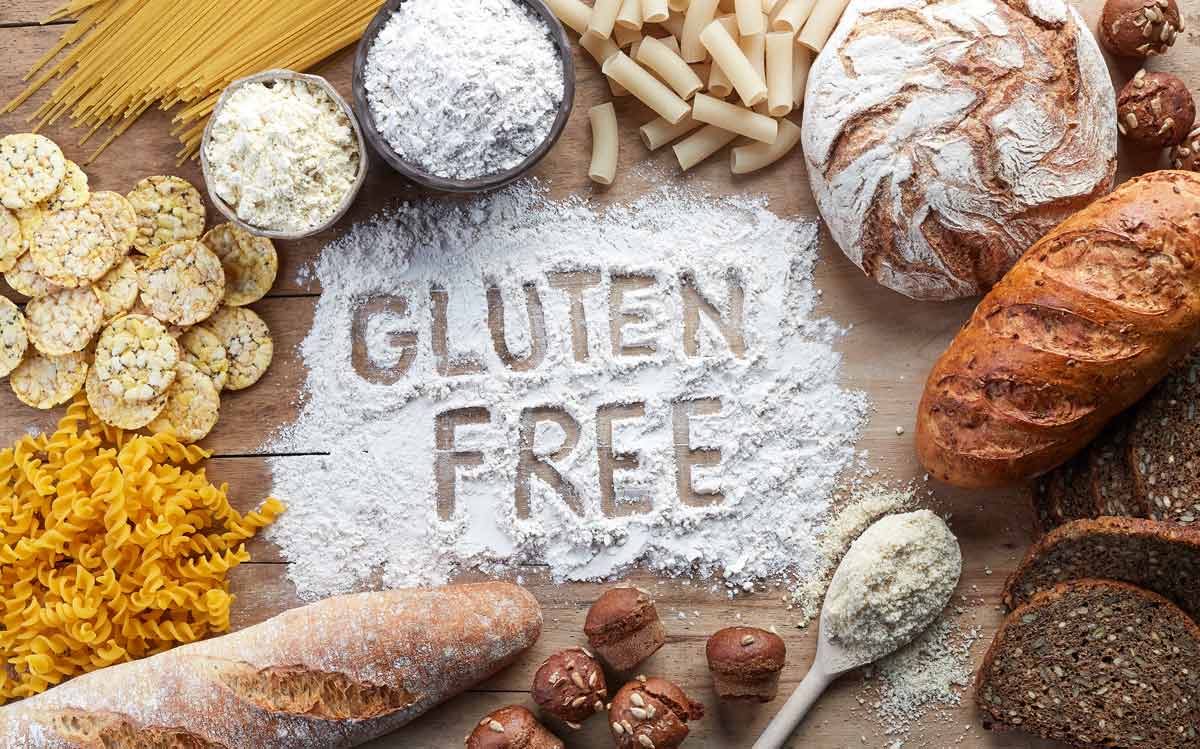
There are also mild forms of gluten insensitivity, where your body cannot digest gluten properly. This causes a range of digestive symptoms. If you get these symptoms when you consume gluten, you might be intolerant towards it.
- Diarrhea
- Constipation
- Headaches
- Skin irritation
- Weight loss
- Depression
If you believe that you have Celiac Disease or gluten intolerance, please get tested. Doctors can usually tell you if you suffer from these disorders by doing a blood test or a biopsy.
Lactose, Lactose Intolence-what is it?
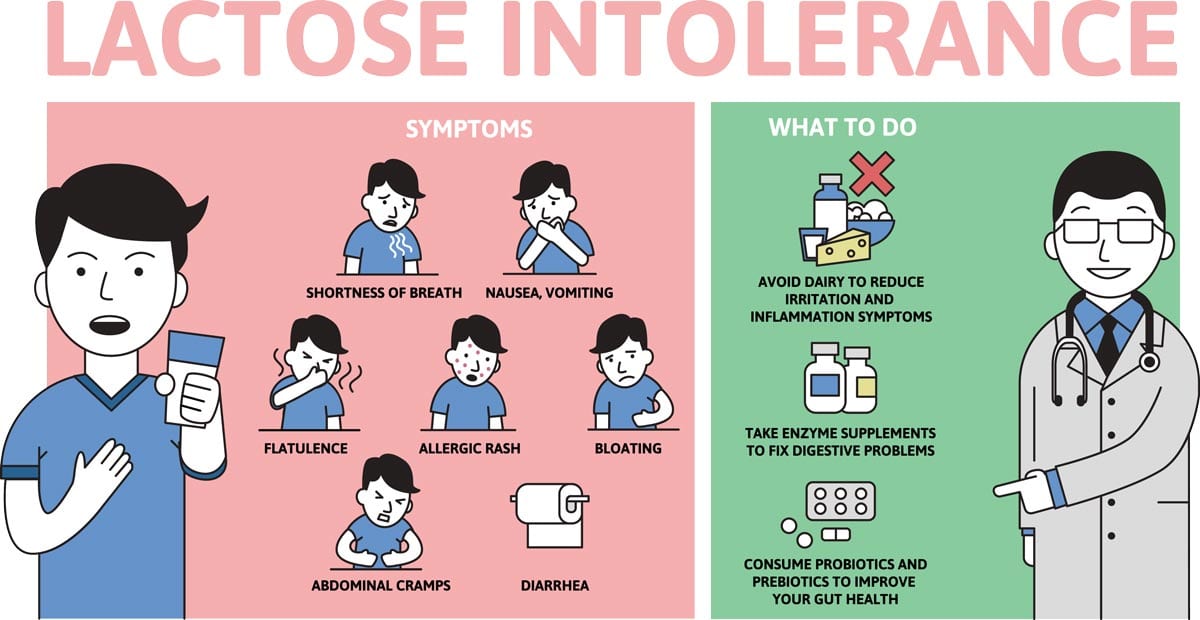
Lactose intolerance often used interchangeably with dairy intolerance is when your body cannot digest the sugar in milk. Symptoms are similar to that of dairy and gluten intolerance, including but not limited to bloating, diarrhea, and constipation.
Dairy- can everyone tolerate it?
Dairy products fall into the category of food produced from or containing the milk of mammals like cheese, butter, cream, and yogurt. The dairy products are teeming with valuable nutrients like fats, carbs, and protein. This is the reason why milk is called a complete food.
Unfortunately, not everyone’s body can digest dairy properly. Similar to gluten intolerance, people with dairy allergies can show symptoms such as diarrhea, constipation, and bloating when they consume dairy. Dairy allergies are often confused with lactose intolerance, which is not the same thing.
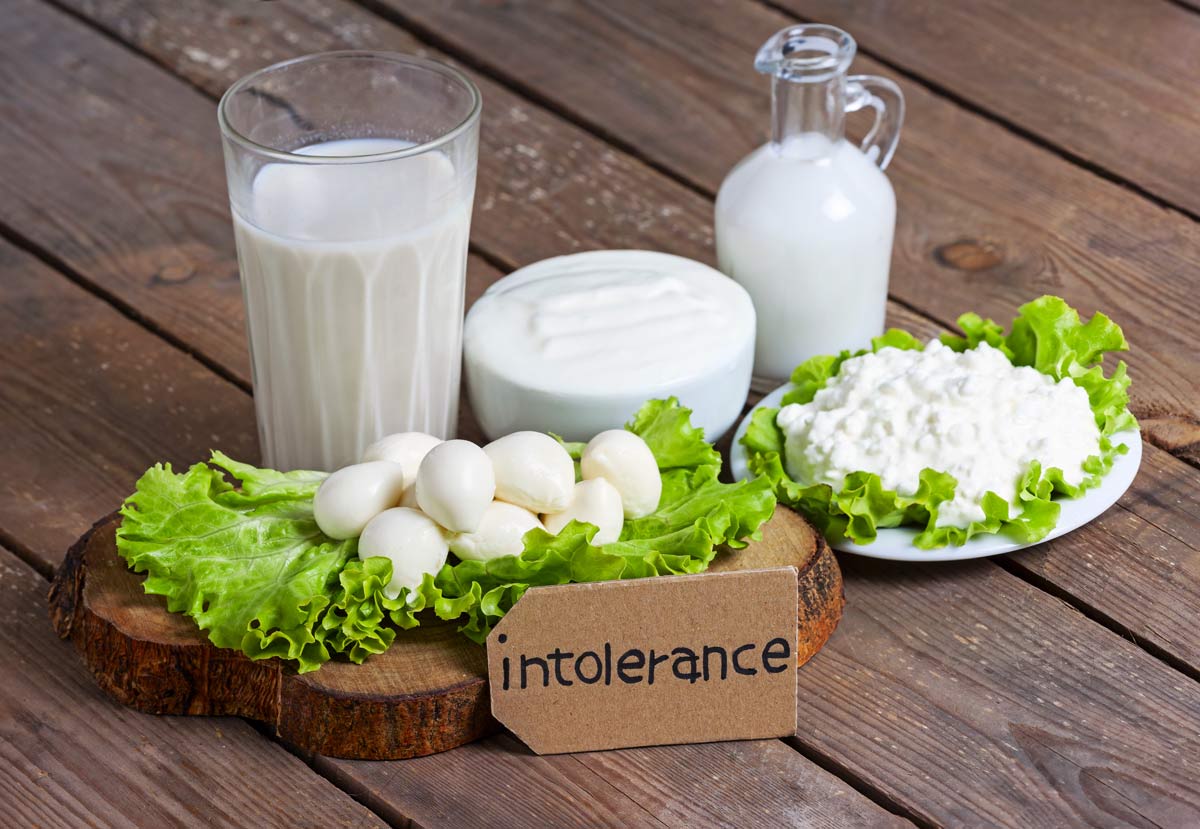
Lactose Intolerance vs. Dairy Allergy
Lactose intolerance occurs because of the absence of the lactase enzyme in your digestive system, which is necessary to break lactose down. In the absence of this enzyme, the lactose from milk has to be broken down in the colon. Lactose intolerance is strictly a digestive problem.
On the other hand, a dairy allergy is a much more serious disorder and is concerned with the immune system. If you have a dairy allergy, your body treats milk and similar products as outsiders and starts to attack them. Dairy allergies are much more dangerous than lactose intolerance, which is relatively harmless.
Though these two are different disorders, they have similar digestive distress symptoms. But dairy allergies have other effects on the body, like headaches, swelling of the face, rashes, hives, wheezing, and trouble swallowing because of tightness in the throat. In extreme cases, this could cause anaphylaxis, which is a life-threatening allergic reaction.
Your diet should be the right mix of all the macros mentioned in this article. Good fats, good carbs, and an appropriate amount of protein are necessary to ensure that your body stays healthy. If you’re trying to get in shape and looking to gain or lose weight, you can always use the formulas mentioned in this article to calculate how much of each component you need.
Interesting Fact: Low Fat does not mean Health
Learn about the famous Keto Diet

The keto diet that’s amplified by the social media echo-chamber follows a very restrictive dietary approach to take delight in its amazing benefits. From whole grains to sugar to fruits, you have to keep most nutritious food at bay, to make most of this challenging dietary regimen, and carefully measure the keto diet macros that you intake every meal.
Calorie Count
The total amount of calories that an individual requires varies on several factors like age, gender, physical activity, and fitness goals (refer to the table mentioned above). If you are a shrewd devotee of this weight loss diet, the count typically translates to:
- 60-70% calories from fat
- 15-30% calories from protein
- 5-10% calories from carbs
Find out how many calories you can consume with one of the most delicious recipes on keto-friendly buttered cod.

Keto Diet Macros Distribution
The data mentioned above is common knowledge to all the keto enthusiasts.
However, many face the utmost difficulty in converting the percentage into grams to make keto life easier.
Here we’ve made the distribution of the keto diet macros while following the ketogenic dietary regimen.
Carbs on Keto
| Calorie Range (calories per day) | Carbs per Day (Grams) |
| <2,000 | 20 |
| 2,000-2,500 | 25-30 |
| >2,500-3,000 | 30-35 |
| >3,000 | 35-50 |
Protein on Keto
The consumption of protein has to be monitored to maintain that you reap the maximum benefits of this low card diet plan.
You can determine the amount of ketosis by considering your physical activity.
| Activity Level | Description | Protein/Day (grm/pd of your body weight) |
| Sedentary | Little to no exercise | 0.6 |
| Moderately Active | Moderate exercise for 2-3 in a week | 0.9 |
| Very Active | Exertive exercise for 3 or more than 3 days in a week | 1.1 |
Fats on Keto
The macro-nutrient that keeps you going on keto is ‘fats’ that make up the highest percentage of the calorie distribution. Did you know that each gram of fat consists of approximately nine calories? Let us calculate how much ‘fats’ does your body require on keto dietary plan.
| Step | Process | Example |
| Take the carb amount as per your requirement from the table provided above | Multiply this number by 4. | 20g x 4 =80 calories |
| Take the protein amount as per your requirement from the table provided above | Multiply this number by 4. | 150g x 4= 600 calories |
| Add the calories gained from protein and calories | 80+600 | 680 calories |
| Subtract the number you get from your daily calorie | Assuming your daily calorie requirement to be 2,000 cal. | 2,000-680= 1,320 calories |
| Divide the derived number by 9 to get the total grams of fat you need each day. | 1320/9 | 146.66 grams of healthy fat foods per day |
Gluten, Lactose, and Dairy on Keto Diet
If you are an enthusiastic keto follower or are planning to dip your toe into the keto pool, you have to make a wise selection of food that you’d like to nosh on. This is to ensure that you are not kicked out of ketosis.
Interesting Fact: Did you know that the keto diet is naturally very low in gluten.
Dairy: You can devour most dairy products; however, you should keep others at bay. You can nosh on dairy products loaded with high-fat content like whipped cream, rich cheeses, and full-fat yogurts. You should also check the kind of milk you are drinking daily. Low-fat milk is not an option at all.
Lactose: It is a sugar found naturally in milk and dairy. As mentioned above, you can savor the dairy products that are teeming with healthy fats. If you are lactose-intolerant or avoiding lactose altogether, you can always have unsweetened lactose-free milk that has keto-friendly ingredients.
To know about the pros and cons of the keto diet, do have a look at our post on seven different diets.
Interesting Fact: ???
Paleo diet explained
Paleo diet is one of the greatest nutritional fads of the moment that emphasizes the consumption of food that our ancestors supposedly ate in centuries back in the Paleolithic era. Also known as the caveman’s diet, the paleo regimen incorporates reliance on animal protein and eggs, fruits and vegetables, and nuts and seeds.
As per the diet consumed by our hunter-gatherer ancestors, you should not have snack grains and legumes, sugar and dairy, and alcohol and processed foods. If you are an ardent fan of this primitive diet, you know that it’s restrictive to follow. However, with several health benefits like improved cardiovascular health and sustained weight loss, the paleo diet is worth a try.
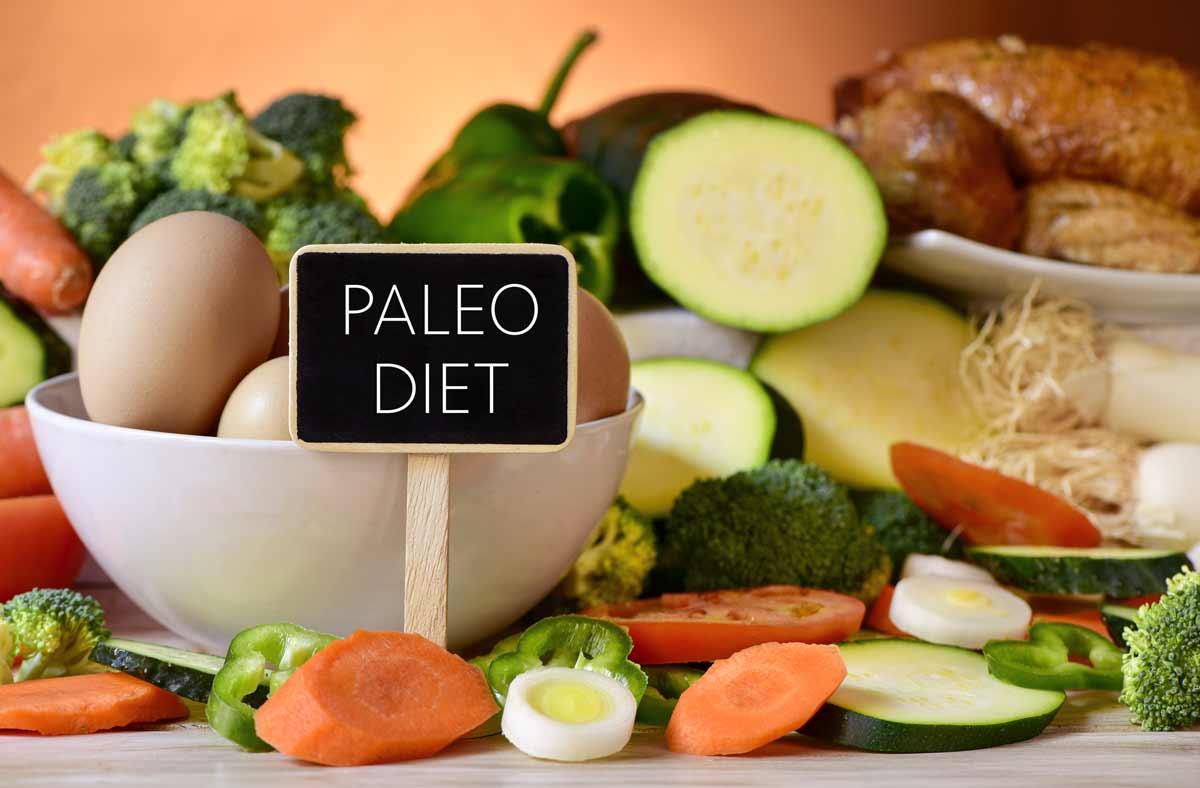
Calorie Count
Paleo eating is all the rage in the health circles at present, but what’s the calorie count one gets while ‘eating like Paleolithic ancestor’? Knowing where you are getting your calorie count is imperative to know that you are on the right track when it comes to reaping the benefits of this primitive diet. The calorie count typically translates to:
- 40% calories from fat
- 40% calories from protein
- 20% calories from carbs
Interesting Fact: Did you know that saturated fat is the cleanest energy source available to us.
Macros Distribution
Knowing how much grams you have to consume specific macros makes your life easy. You can easily monitor your food intake accordingly and do not have to do complex mathematics of converting every digit into a percentage.
\To add to your convenience in your journey of sticking to the paleo diet, we’ve carefully distributed the macros intake you should have each day.

| Macronutrient | Grams per Day |
| Protein | 60 |
| Carb | 20-50 |
| Fats | 40-50 |
Bodyweight x 9= total amount of calories you should intake each day to lose weight
Bodyweight x 13= total amount of calories to gain muscle.
P.S. If the figure you get after the multiplication above is less than 1200 calories, you need to gain weight. You should never consume less than 1200 calories a day.
Plate Portion
Knowing what food should constitute your plate for each meal is going to save you a lot of hassle of keeping track of numbers.
| Constituents | The plate portion |
| Vegetables | 50% |
| Fats | 25% |
| Carbs | 25% |
Gluten, Lactose, and Dairy on Paleo Diet
The entire ethos of the paleo diet is to eat like a caveman on the premise of eating real food. So, specific food categories are restricted while adhering to this diet. From legumes to sugar to processed vegetable oil, you can bid farewell to some of your everyday essentials. Let us further delve into other categories to see what dietary groups you should stay away from.
Gluten: It’s a well-known fact that everything that is paleo is acceptable on a gluten-free diet. But, not everything gluten-free is permitted on the paleo diet. Being a restrictive diet, paleo diet permits no grains, dairy, legumes, soy, cottonseed, and corn.
Dairy: As a general rule of thumb, the paleo diet eliminates the consumption of dairy, especially low-fat. While you may savor some grass-fed full-fat dairy like butter and cheese, you should altogether eschew it if you are lactose intolerant.
Lactose: The shrewd paleo enthusiasts believe that we shouldn’t consume dairy as the hunter-gatherers didn’t have them as well. However, some paleo dieters give you a green signal to enjoy milk, butter, yogurt, and cheese if you are not lactose-intolerant.
Interesting Fact: Eggs DO NOT increase cholestrol or effect on heart diseasse,
Weight 30 Diet Described
Weight 30 is an effective nutritional program carefully curated to upgrade the way you eat and feel about food and yourself.
Designed to remove all the potentially inflammatory food from your daily intake, Weight 30 restricts the consumption of some food categories.
If you are planning to try this program for a good 30 days, you should stay away from food like grains, legumes, dairy, and alcohol.
However, you can dig in Whole-30 approved ingredients like meats, seafood, vegetables, and eggs.
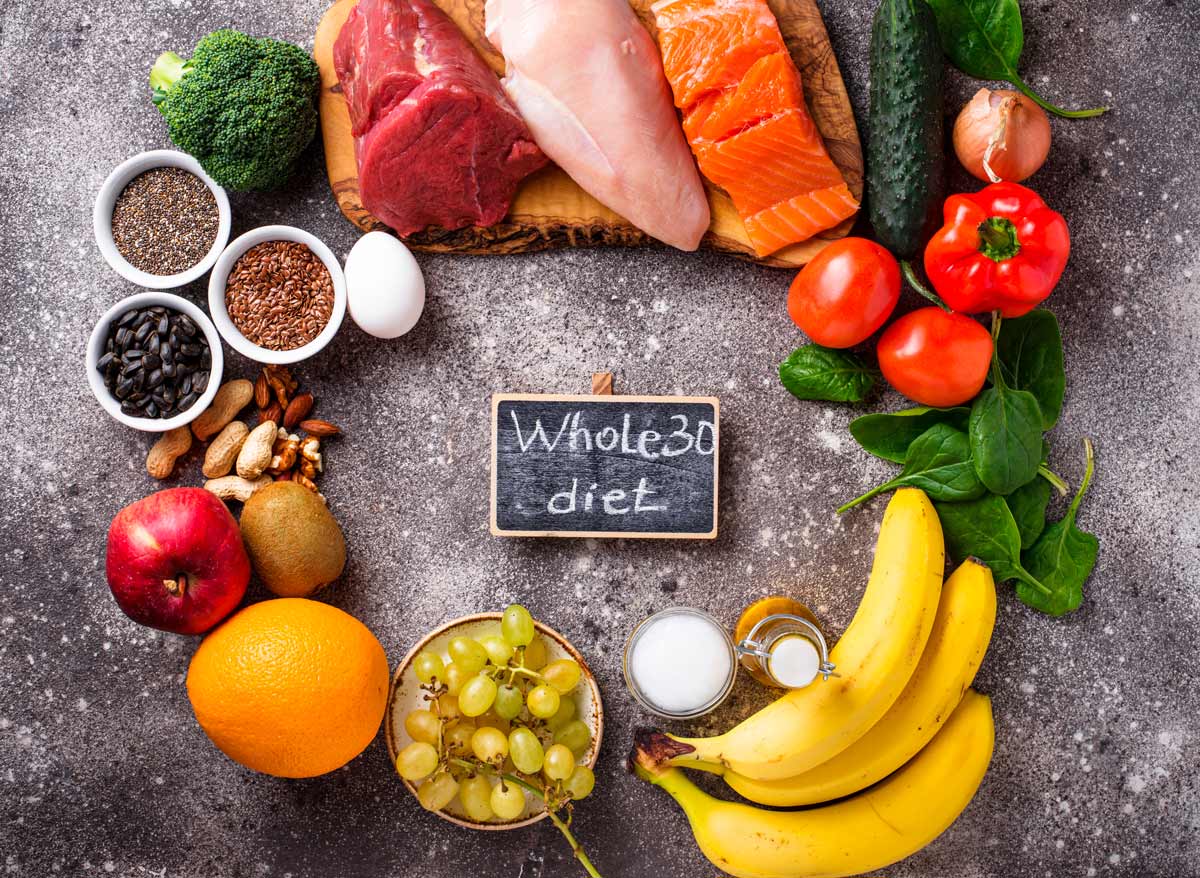
Calorie Counting
Unlike other diets that stress a lot of keeping track of the calories, Weight 30 does not bind you with the numbers. You are free to eat clean, Weight-30, friendly food products. No calorie tracking is one of the reasons why this healthy diet plan took over the internet, seemingly overnight.
Not counting calories may delight you, but this month-long clean-eating program has a set of rules that you have to follow strictly. To reap the maximum benefit of this nutritional program, you should only consume the foods that are Weight-30-friendly. Also, if you indulge yourself in off-limits delicacy and go off track, you are back to square one.
What to Eat and What to Avoid
As this diet does not require one to keep track of the calories of the macronutrients, it’s crucial to understand what food products you can eat.
After 30 Days- The Reintroduction Phase
Once you have religiously adhered to the set rules of the Weight-30 program, you are braced to enter the next step, i.e., the reintroduction phase.
As the name suggests, this step requires you to incorporate certain off-limit foods. This is to monitor how you and your anatomical functions feel once you intake the food after a gap of a month.
In this phase, you should be careful not to have a snack all the restricted food products at a go. For instance, if you add milk to your diet, observe how your body reacts to this addition for at least 2-4 days. And if you see no adverse effects like bloating or skin breakouts, you are good to reintroduce another food category.
| YES | NO |
| Meat & Poultry | Pulses & Legumes |
| Fish & Seafood | Soy |
| Eggs | Dairy |
| Fruits | Sugar & Artificial Sweeteners |
| Vegetables | Alcohol & Smoking |
| Nuts & Seeds | Grains |
| Some healthy fat foods (Healthy plant oils, coconut oil, and ghee) | Processed Additives |
Gluten, Lactose, and Dairy on Weight-30
When you commit to the restrictive nutritional program, you are required to keep foods that contain gluten, lactose, and dairy at bay. You may have some dairy products if your nutritionist permits you to.
Interesting Fact: Meat does not rot in stomach
Atkins Diet Revealed
- Induction
- Balancing
- Fine-tuning, and
- Maintenance.
The basic principle is the same as a keto diet – maintain a low carb diet plan, so that the body switches to burning fat for energy ketosis. The result is controlled weight loss.
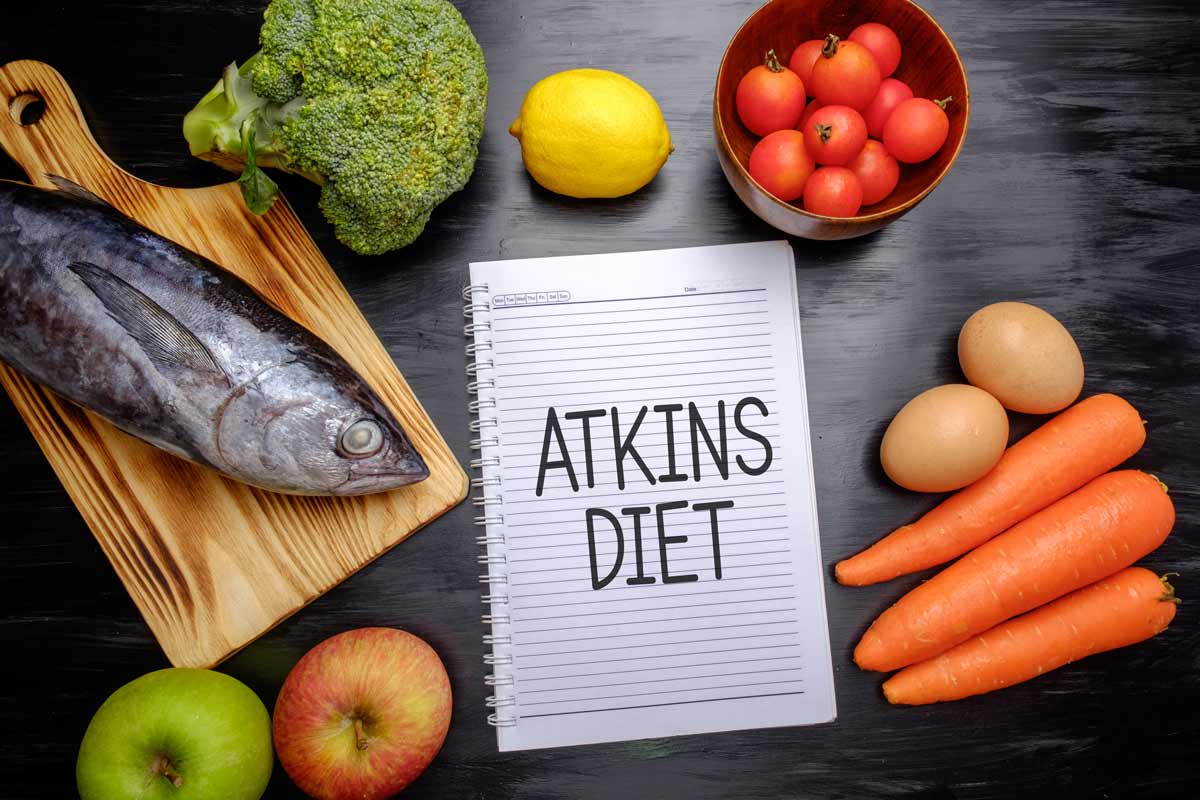
Calorie Count
A healthy diet plan program makes sure that you keep your calories in check and consume macros in the right amount. This will help you maintain optimum weight, speed up your metabolism, lower risk of diseases, and enhance your sense of general well-being.
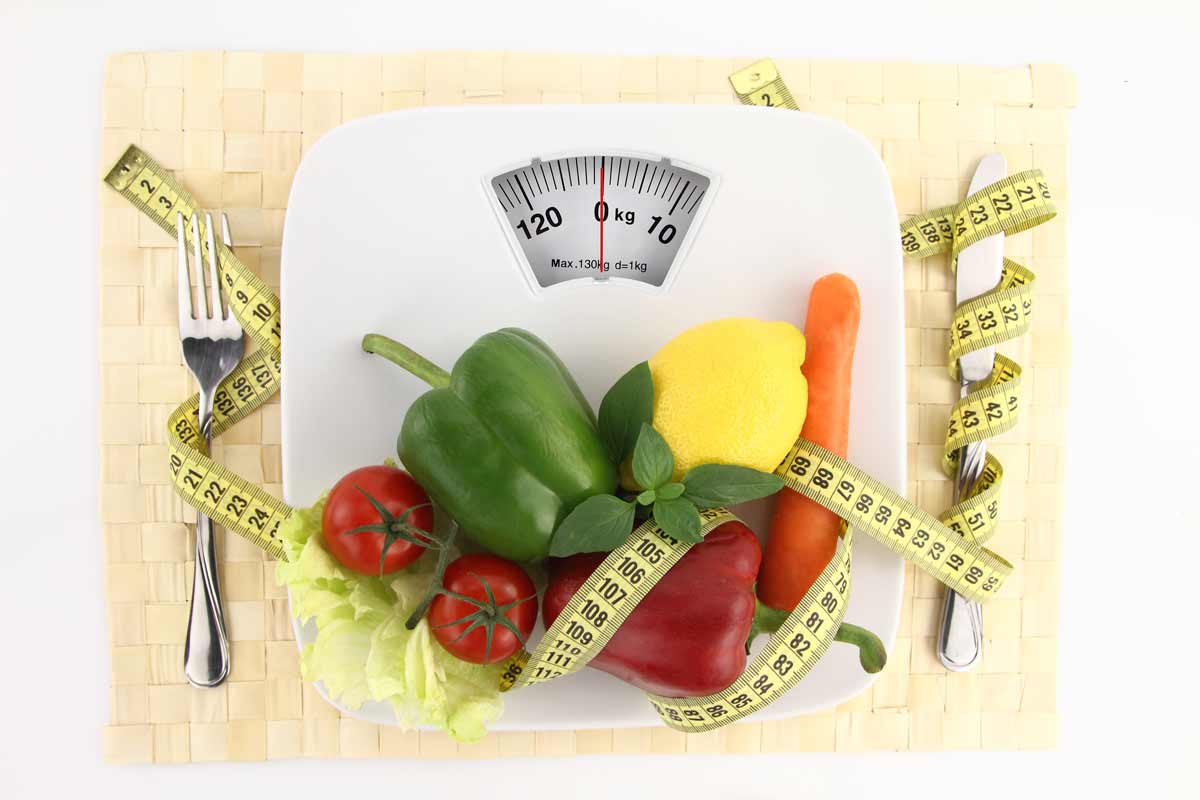
- 10% calories from carbs
- 20-30% calories from protein
- 60-70% calories from fat
Macros Distribution
You will need to consume macros in the right amount for the Atkins diet to work for you. The table below shows how you can vary your intake over the four phases.
Carbs on the Atkins Diet
| Phase | Carbs per Day (Grams) | What you can eat |
| I | <20 | Leafy greens, carrots, turnips, bananas, apples, oranges, pears, grapes, potatoes, sweet potatoes, lentils, beans chickpea |
| II |
|
Low carb vegetables, fruits such as berries, soft cheeses |
| III | 40-120 gm
Increase carb intake by 10 gm every week until you reach your target weight |
Lentils, beans, fruits, starchy vegetables, whole grains |
| IV | 40-120 gm | All carbs in moderation |
Protein on the Atkins Diet
This weight loss diet recommends an intake of 4-6 ounces of protein at every meal.
This amount stays pretty much the same throughout the program.
To help you plan your meals, the table shows the protein content in various recommended foods.
Fats on the Atkins Diet
This low carb diet plan states that fat is vital for human health and should be added in a balanced manner to one’s daily diet.
The table below shows the recommended amount of fat as per the Atkins diet.
| Source | Protein (in grams) |
| Red meat | 20-30 |
| Seafood | 30 |
| Poultry | 28 |
| Legumes | 18 |
| Dairy | 8 |
| Nuts | 6 |
Source: Harvard School of Public Health
| Phase | Fat (in grams) | What to eat |
| Induction Phase/
Phase I |
126 | Full-fat dairy:
Butter, cheese, cream, full-fat yogurt Fatty fish and seafood: Salmon, trout, sardines, etc. Nuts and seeds: Almonds, walnuts, sunflower seeds, etc. Healthy fats: Extra virgin olive oil, coconut oil, avocados, and avocado oil.
|
| Ongoing Weight Reduction Phase
(Phase II Phase III Phase IV) |
118 |
Gluten, Lactose, and Dairy on the Atkins Diet
Before starting the Atkins diet, you must be sure about what foods you can and cannot eat.
Gluten: Foods with gluten are high in carbs, so stick to a gluten-free diet when you have decided to stick to the Atkins diet. This ensures that you do not walk on the wrong trail while following this diet.
Dairy: While dairy products are to be off-limit, you can enjoy the occasional indulgence of cheese, butter, and cream. These are permitted as these contain healthy fat foods.
Lactose: If you are lactose intolerant, you can eat low-lactose dairy products, such as hard cheese and butter as part of your food.
A post on seven different diets gives you a detailed insight into the Atkins Diet.
Interesting Fact: Fruit Juice can contains as much sugar as soft drinks.
Vegan Diet Exposed
This concept has caught on since, and with the twin benefits of weight loss and lowering the risk of cardiovascular disease, it has attracted quite a large public following. The diet shuns meats, dairy, and eggs, and is wholly plant-based.
Though there are no calorie restrictions in a vegan diet, followers do tend to consume fewer calories when following this regimen.
This might be because the food that they consume is fiber-rich, and it can make them feel fuller earlier.

Calorie Count
- 25-30% calories from fat
- 25-30% calories from protein
- 40-45% calories from carbs
Macros Distribution
You should know what foods to eat and also monitor your calorie intake regularly.
Fats on Vegan Diet
The table below lists the sources for the various categories of fats.
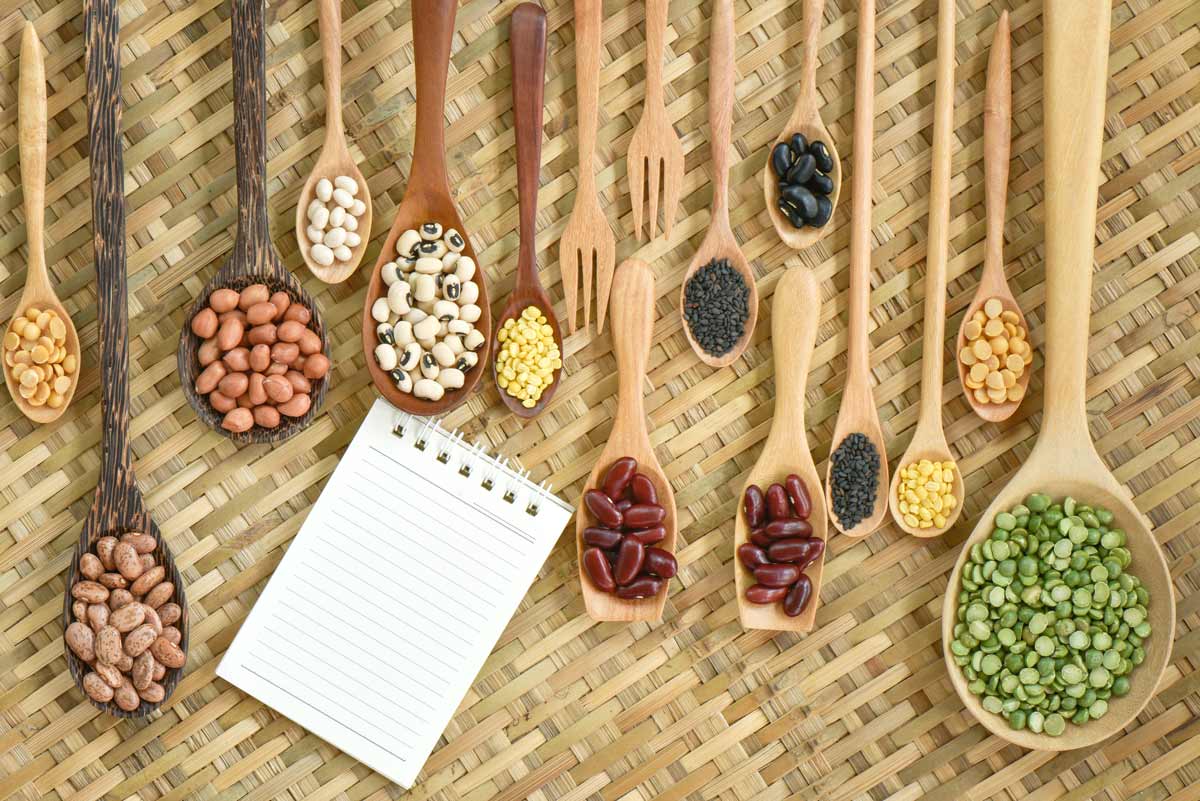
| Type of fat | Description | Sources |
| Saturated fats | Best to avoid; raise harmful cholesterol levels. | Eating whole plant foods can reduce saturated fat intake. |
| Unsaturated fats
Monounsaturated fats
Polyunsaturated fats |
Good fats
Healthy fats; lower harmful cholesterol levels.
Healthy fats that cannot be manufactured by the body; lower cholesterol levels. |
Almonds, cashews, pistachios, peanuts, and brazil nuts. Chia seeds, brussels sprouts, algal oil, hemp seeds, walnuts, and flax seeds. |
Protein on Vegan Diet
Protein is one of the key players in your diet plan. Please refer to the table below for the recommended protein intake as per your activity level.
| Activity Level | Description | Protein per Day (Gram/ pound of your body weight) |
| Minimal | Little or no exercise | 0.6 |
| Moderate | Moderate exercise 2-3 times in a week | 0.9 |
| Intense physical activity | Intense exercise for 3>= days in a week | 1.1 |
Carbs on Vegan Diet
For a vegan diet, add the amount of fat and proteins that you consume per day and then subtract these from your daily recommended calorie intake. Suppose you consume-
- 60gm of fat
- 150gm of proteins
| Step | Process | Example |
| Take the amount of fat (in grams) |
Multiply this number by 9 (since 1 gm of fat contains 9 calories). | 60g x 9 =540 calories |
| Take the number of proteins (in grams) |
Multiply this number by 4(since 1 gm of protein contains 4 calories). | 150g x 4= 600 calories |
| Add the calories gained from fat and proteins | 540+600 | 1140 calories |
| Subtract the number that you get from your daily calorie intake | Assuming your daily calorie requirement to be 2,000 calories | 2,000-1140=860 calories |
| Divide the derived number by 4 to get the total grams of carbs you need each day. | 860/4 | 215 grams of fat per day |
Gluten, Lactose, and Dairy
If you are a vegan, you will need to monitor your intake of gluten, lactose, and dairy carefully.
Dairy: All animal products, such as eggs and milk, and meats, are a strict no-no on the vegan diet.
Lactose: Lactose is a derivative of dairy, and as such, not to be consumed while on a vegan diet.
Interesting Fact: Did you know that insulin encourages fat gain by pushing glucose and fatty acids into your cells?
All about the Mediterranean Diet
Well, one of the answers is that they were hinged to the Mediterranean diet.
This form of eating regimen careens towards eating more fruits, vegetables, nuts, seeds, healthy fat foods while reducing the intake of poultry, meat, and other dairy items.
Even though living on fruits and vegetables may seem a bit mundane and downright dull, it isn’t. To make it up to you, the Mediterranean diet does allow savoring one or two glasses of Red Wine now and then.

Calorie Count
The primary motive of jumping on board with a Mediterranean diet is weight loss. Due to this, the calorie count is 1200 calories per day for both men and women. The best part of this diet routine is that everything you eat is fresh, colorful, and full of macronutrients and still lose weight.
- 40% of Fat (mostly coming from plants)
- 20% of Protein
- 40% of Carbohydrates
Macros Distribution
Probably one of these two answers, right?
Well, these diet gurus might not have heard about the Mediterranean Diet and not know that 80% of foods are rich in fats and carbs. Is this magic, or what?
Well, magic isn’t real, but the Mediterranean diet is.

Proteins on the Mediterranean Diet
Daily exercise is vital to adapt to the Mediterranean diet. Depending upon your age, follow moderate to strenuous exercise patterns. Aim for a minimum of 150 minutes of exercise daily. Be it swimming, running, brisk walking, biking, or any other exercise that catalyzes an increase in the heart rate.
| Food | Eating Pattern | Calories (1 gm protein = 4 Calories) |
| Vegetables (½ cup cooked or 1 cup raw per serving) (75 to 150 gms) | 4 to 8 servings per day | 600 to 1200 Calories |
| Legumes (½ Cup per serving) | 2 to 4 servings in a day | 150 to 300 Calories |
| Whole Grains (1 ounce per serving) | 4 to 6 servings each day | 600 to 900 Calories |
| Poultry (3 ounces) | 1 to 3 servings per week | 1800 calories |
Fats on the Mediterranean Diet
The mainstay of a Mediterranean diet is healthy fats. This genre of fats is not going to make your clothes tighter, but they will reverse the wheel. Well, here’s how you can tackle fats in a Mediterranean diet.
| Food | Eating Pattern | Calories 1 gram fat = 9 calories |
| Oils (monounsaturated fat) (1tsp = 4 grams) | 4 to 6 servings in a day | 36 to 56 Calories |
| Fish (3 ounces per serving) | 2 to 3 servings in a week | 2,700 Calories per week |
Carbohydrates on Mediterranean Diet
The second most vastly present macronutrient in a Mediterranean diet, and they are welcomed with open arms. For most of the week, focus on putting healthy fibers in your plate. Once in a while, you can also give yourself a sweet carbohydrate treat. It’s a beautiful reward for yourself.
Carbs are not only good for your taste buds, here’s everything you need to know about this macronutrient in depth.
| Food | Eating Pattern | Calories (1 gram carb = 4 calories) |
| White Bread (Whole Grains) 1 Slice per serving = 33 grams | 4 to 6 servings per day | 130 to 200 calories |
Gluten, Dairy, and Lactose on Mediterranean Diet
Since the Mediterranean diet favors more carbs and fats, it gets you thinking, what if I am Lactose-intolerant? The same goes for foods that contain gluten, which is mostly whole grains. So, will nixing the gluten and lactose infused products work, or is the Mediterranean diet just another fad?
Gluten: It is not necessary to eat gluten-based whole grains like wheat, barley, or rye. Go for the gluten-free whole grains and still enjoy a similar taste, but with better fiber content. It’s a win-win situation.
Dairy: Protein intake in the Mediterranean diet is on the lower side of the spectrum. Hence, to compensate for that, resort to fish and other protein base products rather than dairy ones.
Lactose: In the Mediterranean diet, the products containing lactose can be mixed. Since the major components of this diet that contain lactose are yogurt and cheese, go for the lactose-free versions, if you still want to enjoy eating them.
Interesting Fact: It is important to feed the bacteria in your gut. Bacteria to human cells in your intestines are greater than 10:1.
The Dash Diet Explained
As the famous adage goes, “We are what we eat,” eating the right diet can also prevent the incidence of hypertension and pave the way for a healthy life ahead. Not only does it help keep the high blood pressure in check, but a Dash Diet also contributes to lowering the risk of cancer and diabetes.
Also, check out our compilation of 40 tips for a healthy lifestyle.
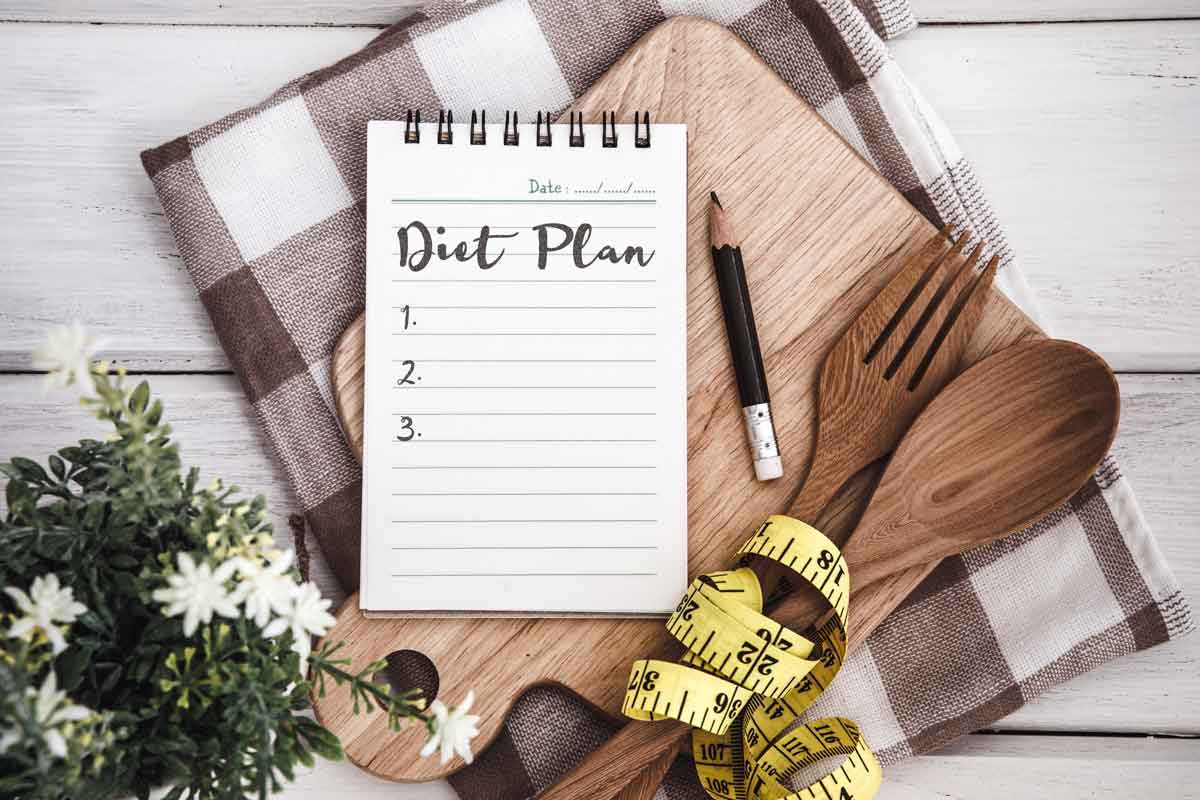
Calorie Count
Since a Dash Diet directly targets the blood pressure, the food intake must also depend on the factors like age, physique, physical activity, and gender. The cumulative calorie intake relies upon the foods which deliver antioxidants and are pivoted via dietary patterns rather than a single form of diet.
| Fats | 27% of Calories |
| Protein | 18% of Calories |
| Carbohydrates | 55% of Calories |
| Potassium | 4700 mg |
| Calcium | 1250 mg |
Macros Distribution
Before moving forward, a thumb rule of Dash Diet is keeping the sodium intake to below 2300 mg or 1 tablespoon per day.

Carbohydrates on a Dash Diet
Carbs are a significant source of nutrition under a Dash Diet; hence, it is essential to take Green Leafy Vegetables, Whole Grains, Fruits (having low glycemic index), and beans & legumes.
Based on the calories distribution, find below the amount of food required to cover for carbs.
| Food | 1600 Calories per Day | 2000 Calories Per Day |
| Vegetables (30 grams) | 3 to 4 servings per day | 4 to 5 servings per day |
| Fruits (30 to 50 grams) | 4 fruits per day | 4 to 5 fruits per day |
| Whole Grains (28 grams) | Exactly 6 servings per day | 6 to 8 servings per day |
| Legumes | 3 to 4 servings in a Week | 4 to 5 servings in a week |
Protein on a Dash Diet
Dash Diet limits the consumption of rich sources of proteins. You must focus on lean meat, eggs, dairy products with low fats, and fish.
| Food | 1600 Calories per Day | 2000 Calories Per Day |
| Low-fat foods (milk or dairy products) – | 2 to 3 savings per day | 2 to 3 servings per day |
| Lean meat, fish, and poultry (288 grams) | 3 to 4 servings of one-ounce in a day | 6 per ounce servings per day |
Gluten, Lactose, and Dairy on a Dash Diet
The basic premise of the Dash Diet is to keep your blood pressure levels under the radar. Thus, we are going to examine how gluten and lactose infused foods interact with this diet.
Gluten: Grains can be a significant culprit that supplies gluten in a Dash Diet. However, replacing them with wheat-based foods can help balance the scales and attenuate the gluten intake.
Lactose: Individuals with lactose intolerance can still eat yogurt and heated milk products. Milk and milk-based products have different variants; you can always replace them with lactose-free products.
Dairy: Being allergic to dairy products cannot cause an issue with dairy products. It is also wholly feasible to replace them with lactose-free dairy products. However, it is essential to ensure the Vitamin D and Calcium content in these products.
Diet Summary Comparison
| Keto | Paleo | Weight 30 | Atkins | Vegan | Mediterranean | Dash | |
| Calorie Distribution | -NA_ | ||||||
| Fat | 60-70% of total calories | 40% of total calories | – | 60-70% of total calories | 25-30% of total calories | 40% of total calories | 27% of the total calories |
| Carbohydrate | 5-10% of total calories | 20% of total calories | – | 10%
of total calories |
40-45% of total calories | 40% of total calories | 55% of total calories |
| Protein | 15-30% of total calories | 40% of total calories | – | 20-30%
of total calories |
25-30% of total calories | 20% of total calories | 18% of the total calories |
| Gluten | Yes
(Low quantity) |
No | No | No | Yes | Optional
(Go for gluten-free whole grains) |
Limited |
| Dairy | Yes
(Loaded with high-fat content) |
No
(Only grass-fed full-fat dairy) |
No
(Only if permitted by the nutritionists) |
Occasional indulgence | No | Optional
(Go for other sources of protein like fish) |
Optional
(Go for lactose-free dairy products) |
| Lactose | Yes
(Loaded with high-fat content) |
No
(Only grass-fed full-fat dairy) |
No
(Only if permitted by the nutritionists) |
Occasional indulgence | No | Optional
(Go for lactose-free versions) |
Optional (Go for lactose-free products) |
The Final Say on Diets
You are now all ready to follow the healthy diet plan that is perfect for you. And the best part is you know the number of macronutrients that you should stick to.
Happy healthy dieting 🙂

Other Articles you may like.
Register Now
Sign up today and Get Expert Fitness Advice Right delivered right in your mail


